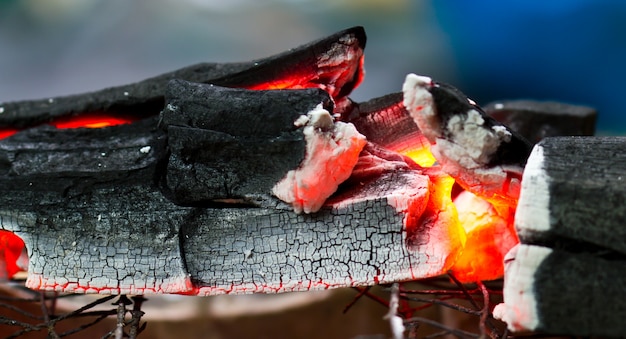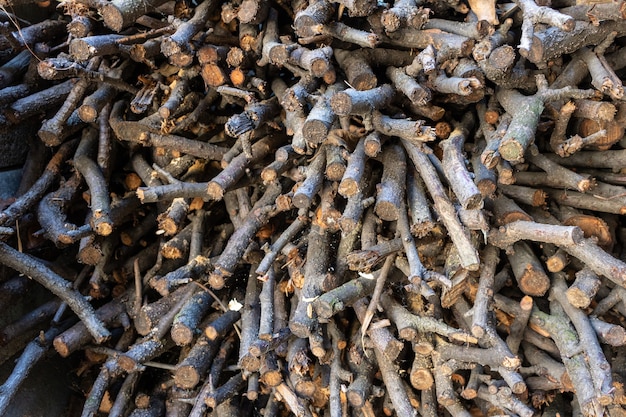Why aren’t my wood chips smoking?
When it comes to outdoor cooking, using wood chips to add that smoky flavor to your dishes is a popular choice. However, you may find yourself in a situation where your wood chips just won’t seem to smoke. This can be frustrating, especially when you’re trying to achieve that perfect smoky flavor. But fear not, we’re here to help you troubleshoot this issue and get those wood chips smoking!
1. Damp Wood Chips
One of the most common reasons why wood chips don’t smoke is because they are damp. If your wood chips have absorbed moisture, it will be difficult for them to catch fire and produce smoke. Make sure that your wood chips are stored in a dry place to prevent them from getting damp.
2. Insufficient Airflow
In order for wood chips to smoke, they need sufficient airflow. If you’re using a smoker or grill, make sure that the vents are open to allow the air to circulate. A lack of airflow can prevent the wood chips from igniting and producing smoke.
3. Inadequate Preheating
Preheating your smoker or grill is crucial to get your wood chips smoking. Without preheating, it can take longer for the wood chips to reach the necessary temperature to produce smoke. Take the time to preheat your cooking equipment before adding the wood chips.
4. Low-Quality Wood Chips
The quality of your wood chips can also affect their ability to produce smoke. Some lower quality wood chips may not have the right moisture content or composition to ignite easily. Consider investing in good quality wood chips specifically designed for smoking to ensure better results.
5. Insufficient Soaking Time
If you are using wood chips that require soaking before use, it’s essential to give them enough time to absorb water. Soaking the wood chips helps create smoke and prevents them from burning too quickly. Follow the instructions provided by the manufacturer to ensure you’re soaking them for the appropriate duration.
6. Incorrect Placement of Wood Chips
The placement of wood chips within your cooking equipment can impact their ability to smoke. If you’re using a smoker, ensure that the wood chips are placed directly on the heat source or in a designated chip box. For grills, try placing the wood chips in a foil pouch with holes, allowing them to smolder and produce smoke.
Pro Tip: Experiment with different placement methods and quantities of wood chips to find the perfect balance for achieving the desired smoky flavor.
If you’ve tried all the troubleshooting tips mentioned above and your wood chips still aren’t smoking, it could be an issue with your cooking equipment. Check for any obstructions or problems with the heating elements, vents, or ignition systems that may be preventing the wood chips from smoking properly.
Remember, achieving that delicious smoky flavor takes practice and patience. Don’t get discouraged if your first attempts don’t yield the desired results. With a bit of experimentation and the right techniques, you’ll soon be enjoying perfectly smoked dishes that will impress your family and friends!
At What Temperature Do Wood Chips Burn?
Burning wood chips is a popular method of fueling fires for various purposes, such as heating, cooking, and smoking. However, understanding the optimal temperature for burning wood chips is essential to ensure efficient combustion and achieve the desired results.
The Ignition Point of Wood Chips
Wood chips, like any other combustible material, have a specific ignition point at which they start to burn. The ignition temperature for most wood types ranges between 190°C (374°F) and 260°C (500°F). However, the actual ignition point can depend on factors such as the moisture content of the wood, its density, and the presence of other accelerants.
The Burning Temperature Range
Once ignited, wood chips typically burn within a temperature range of 400°C (752°F) to 600°C (1112°F). This temperature range is ideal for achieving complete combustion, where the wood releases energy in the form of heat and only minimal smoke or pollutants are produced.
Burning wood chips at higher temperatures can result in the release of harmful by-products such as creosote, which can damage chimneys and pose health hazards. On the other hand, burning wood chips at lower temperatures may lead to incomplete combustion, increased smoke production, and reduced efficiency.
Controlling the Burning Temperature
To control the burning temperature of wood chips, it is important to consider factors such as airflow, fuel size, and moisture content. Adequate oxygen supply is crucial for maintaining a consistent and controlled burn. Properly seasoned wood chips with a moisture content of around 20% provide optimal results.
It is worth noting that different applications may require varying burning temperatures. For example, when using wood chips for smoking, temperatures in the range of 90°C (194°F) to 150°C (302°F) are commonly preferred to infuse foods with smoky flavors.
At What Temperature Do Wood Chips Start to Smoke?
Smoking food is a popular cooking technique that adds an exquisite flavor to dishes. One key component of smoking is using wood chips to create smoke. But at what temperature do wood chips start to smoke?
Understanding the Process
Wood chips start to smoke when the temperature reaches a range of 300 to 350 degrees Fahrenheit (150 to 175 degrees Celsius). This temperature allows the wood chips to smolder and release flavorful smoke that infuses the food with a delicious taste.
The Importance of Soaking Wood Chips
Before using wood chips for smoking, it is crucial to soak them in water for at least 30 minutes. Soaking wood chips helps prolong the smoking process by preventing them from burning too quickly. It also helps release moisture, which creates more smoke and enhances the flavor.
Choosing the Right Wood Chips
Different types of wood chips impart distinct flavors to smoked food. Here are a few popular choices:
- Hickory: Known for its strong, smoky flavor, hickory wood chips are ideal for smoking beef, pork, and game.
- Apple: Apple wood chips provide a sweet and fruity aroma, making them perfect for smoking poultry and seafood.
- Mesquite: With its bold and earthy flavor, mesquite wood chips pair well with beef, lamb, and vegetables.
Tips for Smoking with Wood Chips
To achieve the best results when smoking with wood chips, consider the following tips:
- Preheat your smoker: Ensure your smoker is preheated to the desired temperature before adding wood chips.
- Control the airflow: Adjust the vents on your smoker to regulate the amount of oxygen and control the intensity of the smoke.
- Monitor the temperature: Use a reliable thermometer to keep track of the smoking temperature and make any necessary adjustments.
“Smoking food with wood chips adds a unique and tantalizing flavor that elevates your culinary creations.” – Chef John Smith
In conclusion, wood chips start to smoke when the temperature reaches around 300 to 350 degrees Fahrenheit. By soaking the wood chips beforehand and selecting the right type for your desired flavors, you can enhance your smoked dishes and impress your guests.
How long should I smoke my wood chips?
When it comes to smoking your food, the type and amount of wood chips you use can greatly impact the flavor. But how long should you actually smoke your wood chips for? Let’s find out.
Factors to Consider
The duration of smoking depends on several factors:
- The type of wood chips:
- The type of food:
- The intensity of smoke flavor:
Hardwoods, such as oak or hickory, require a longer smoking time compared to fruitwoods like apple or cherry.
Different types of meats and vegetables require varying smoking times. For example, poultry may need a shorter smoking period than pork or beef.
If you prefer a milder smoky taste, you may want to smoke the wood chips for a shorter duration.
Suggested Smoking Times
Here are some general guidelines on smoking times for popular wood chip types:
| Wood Chip Type | Smoking Time |
|---|---|
| Oak | 1-2 hours |
| Hickory | 2-3 hours |
| Apple | 30 minutes – 1 hour |
| Cherry | 45 minutes – 1.5 hours |
Note that these times may vary depending on personal preference and the type of smoker or grill being used. It’s always a good idea to experiment and adjust the smoking time to achieve the desired flavor.
Tips for Smoking Wood Chips
- Soak the wood chips in water for about 30 minutes before placing them in the smoker.
- Avoid oversmoking your food, as it can lead to an overpowering taste and bitter flavors.
- Monitor the temperature of your smoker to ensure consistent heat throughout the smoking process.
Remember, smoking wood chips is an art that requires practice and experimentation to find your perfect balance of flavors. Enjoy the process and savor the delicious results!
Can a Pile of Wood Chips Ignite?
Understanding the Risks
Wood chips are commonly used in various industries for landscaping, gardening, and as biomass fuel. However, it is important to understand the potential risks associated with storing wood chips in large piles. While wood chips themselves may not easily ignite, there are certain conditions that can lead to spontaneous combustion.
Spontaneous Combustion
Spontaneous combustion occurs when heat is generated within a substance without an external ignition source. In the case of wood chips, this can happen if the moisture content exceeds recommended levels, typically above 20%. When wood chips decompose and ferment, heat is produced as a byproduct. If the heat is not properly dissipated, it can build up, leading to a fire.
Preventing Spontaneous Combustion
To prevent the risk of spontaneous combustion in wood chip piles, proper storage and maintenance procedures should be followed:
- Proper Moisture Content: Ensure that the moisture content of wood chips does not exceed recommended levels, typically below 20%.
- Adequate Airflow: Allow for proper ventilation and airflow around the pile to dissipate any heat generated.
- Regular Monitoring: Regularly check the temperature of the pile using temperature sensors or probes. If the temperature starts to rise, take immediate action.
Industry Guidelines
To further minimize the risk of fire, industries that handle wood chips often follow specific guidelines:
- Storage Considerations: Wood chips should be stored away from sources of ignition and potential fire hazards.
- Separation: Separate piles of wood chips to prevent the spread of fire.
- Proper Disposal: Dispose of any combustible waste material properly to avoid accidental fires.
Note: It is crucial to adhere to industry guidelines and local regulations when handling and storing wood chips to ensure the safety of your surroundings.
In conclusion, although a pile of wood chips may not easily ignite, the risk of spontaneous combustion exists. By following proper storage procedures, monitoring moisture levels, and ensuring adequate airflow, you can significantly reduce the risk of fire. It is essential to prioritize safety and be aware of the potential dangers associated with storing wood chips in large piles.
Conclusion
Understanding the temperature at which wood chips burn is crucial for achieving efficient combustion and desired outcomes. Ignition usually occurs between 190°C (374°F) and 260°C (500°F), with the optimal burning temperature range falling between 400°C (752°F) and 600°C (1112°F). By controlling factors such as airflow, fuel size, and moisture content, individuals can maintain a consistent and controlled burn. However, it is essential to adjust the burning temperature based on the specific application to achieve the desired results.


